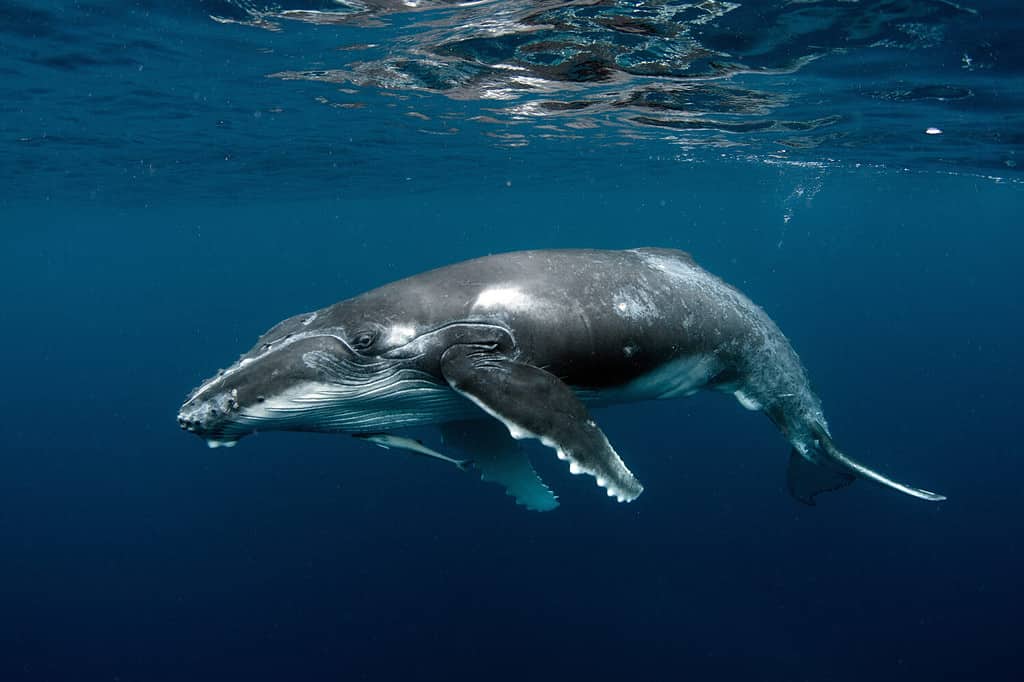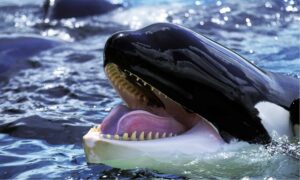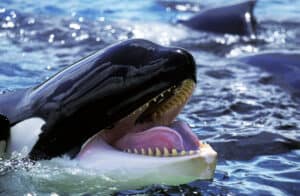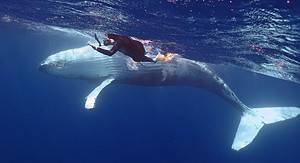Humpback whales are majestic animals. These large and impressive mammals are very social and have interesting feeding behaviors. Lucky boaters managed to experience a pod of humpback whales feeding and jumping off Cape Cod. They were bubble feeding.
Just a few days before, the New England Aquarium’s aerial survey team captured this amazing moment. One of the whales in the pod is Salt, a well-known whale in the area, easy to identify from her speckled white dorsal fin.
Bubble feeding, also known as bubble netting feeding, is a technique that humpback whales use to efficiently hunt. This can be done alone or in groups with as many as 20 whales. When bubble feeding, humpback whales dive deep below schools of fish and blow bubbles. This causes the school of fish to move closer to the surface of the water. The force of the bubbles also stuns them. Humpback whales use their bubble-blowing abilities to create a ‘bubble net’ that traps the fish. From there, humpback whales swim up through the center of the net and devour as many fish as possible.
About Humpback Whales
Humpback whales are large marine mammals with a wide range. They are one of the largest living animals in the world. Humpbacks are baleen whales in the genus Megaptera. They have long pectoral fins, flippers, and mouths. Most humpback whales are massive. At birth, a young humpback calf can weigh about 1,500 pounds. They are also 14 feet long when born. Humpback whales are easily longer than school buses. They average about 46 to 49 feet long. Female humpback whales are larger than males and may reach up to 56 feet.
Humpback whales have wide diets. They mainly consume schools of fish and gulp down their prey. Humpback whales have no natural predators, except for humans. Sadly, they were nearly hunted to extinction. During the 1960s, experts estimated there were only about 5,000 humpback whales left in the wild. That number has risen to over 150,000.

Humpback whales can easily surpass 50 feet long.
©Tomas Kotouc/Shutterstock.com
Who is Salt?
Salt, featured in the photos taken by New England Aquarium’s aerial survey team, was first spotted in the mid-1970s. This wonderful whale was observed alongside other whales, including her partner affectionately named Pepper. Salt is named after her speckled fin, which is due to scarring. Salt is an iconic humpback whale, often sighted near Maine or Massachusetts. She has at least 16 children, and many more grandchildren.
The photo featured at the top of this post is © Maridav/Shutterstock.com
Thank you for reading! Have some feedback for us? Contact the AZ Animals editorial team.







